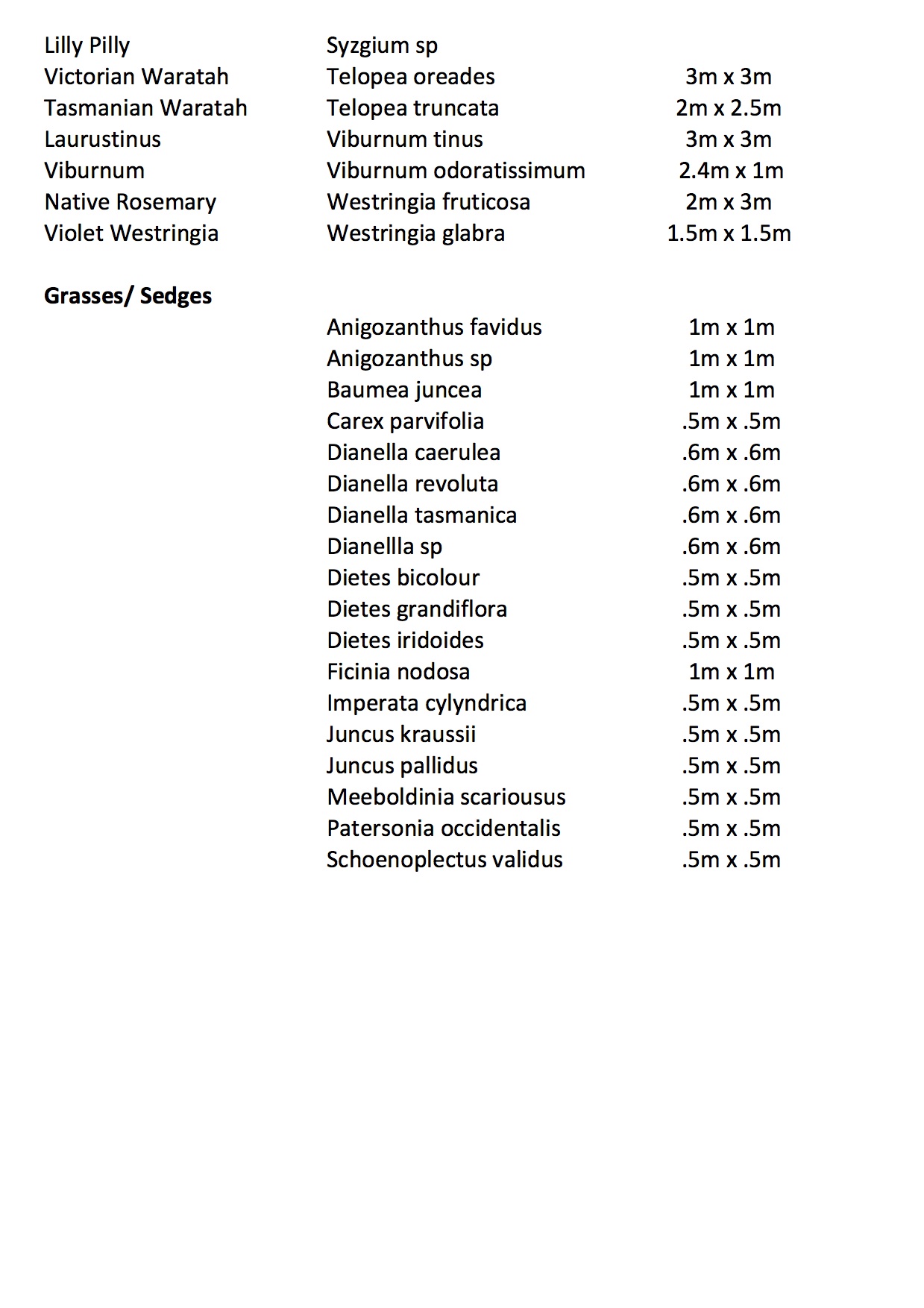Perfect plants to reduce the intensity of a bushfire near your home.
Part 5
The next task, after planning and designing your home and garden, is to choose suitable plants. Selecting plants with some intrinsic characteristics, that reduce the likelihood of ignition, could help reduce the bushfire risk within your garden.
There are several characteristics that influence how flammable a plant is. These are plant flammability, plant moisture content, branching patterns, texture, density, leaf size and shape, bark type, oils, waxes and resins, and the retention of dead materials.
Plant Flammability
Some plants are more flammable then others and the flammability can vary in unpredictable conditions.
Plant flammability can be described as a combination of
- the time taken to ignite
- how readily it burns
- how much material there is to burn
- how long it takes until all the available fuel is consumed
Flammability will vary depending on
- a plants age, health, physical structure and chemical content
- the daily and seasonal climatic changes
- location of the plant in relation to other vegetation and flammable objects
- the specific part of a plant (some parts are more flammable than others)
Great spacing and plant selection, along with a stone mulch make this style of garden perfect. (Photo: Kerri Fennell)
Plant Moisture Content
Plants, such as succulents, with a high moisture content will not burn until the moisture has been removed. Plants can dry out as a result of radiant heat, especially if they are exposed for long enough.
Dry plants will ignite more rapidly and continue to burn until the source is removed.
Moisture content depends on a number of factors
- Time of day - before sunrise, plants are typically at their most hydrated. As they transpire during the day the moisture content decreases until the plants stops after sunset. Most plants are most flammable in mid to late afternoon.
- The season - In summer the soil dries out and the moisture content decreases
- Part of the Plant - Leaves and new growth generally have a higher moisture content than stems and branches. Dead leaves and twigs have little moisture and become highly flammable on hot, dry days.
- Where it is planted - The sun and shade, availability of water, drainage and soil type will affect plant moisture.
- Environmental conditions - High temperatures, low humidity and periods of drought will increase the flammability of plants.
- The age of the Plant and its growth stage - Plants start as moisture rich shoots and become woody as they age. The older the plant, usually the drier. New growth is generally soft and fleshy.
Branching Pattern
This influences the distribution and density and foliage with the plant.
- Choose plants with an open and loose branching as well as leaves that are thinly spread, as plants with closely packed leaves and branches have more fuel
- Plants with branches at least 2m above ground are better than those with foliage to the ground and stops the foliage acting as a ladder for fuels.
Texture
Coarse textured plants are less flammable than those with a fine texture, because they have a lower surface area to volume ratio.
Density
A plant that is hard to place a hand into, or see through is very dense. These are often more flammable due to the higher fuel load.
Leaves
The fineness, size and shape of leaves affect their flammability.
- Wide, flat and thicker leaves usually means a higher moisture content, so therefore less flammable.
- Small, thin narrow leaves have a high surface area to volume ratio, which tends to make them more susceptible to drying out.
- Leaves with high levels of oils increases flammability.
- The shape can influence how easily they are caught in vegetation when they fall off the plant. If leaves are caught in the plant this can increase flammability.
(source: CFAVIC Landscaping for Bushfires, 2011)
Agaves are perfect with large wide succulent leaves (Photo:Kerri Fennell)
Bark Type
Some bark types ignite more readily than others.
- Bark that is loose, stringy or fibrous will ignite easily and can also act as ladder fuels.
- Bark that attaches tightly or is smooth in texture is less likely to ignite.
- Some smooth barked trees shed their bark annually and trap large ribbons of bark in their canopy. These ribbons are highly flammable and can be carried as embers and can act as a ladder fuel.
This bark is rough, but is held tightly. As it starts to shed, it should be removed to avoid the hazard. (Photo:Kerri Fennell)
Oils, Waxes and Resins
Natural chemicals found in plants can increase their flammability. These plants often have a strong scent when crushed.
These plants should be limited and placed carefully within the garden.
Retention of Dead Material
Dead leaves, twigs and branches that remain on the plant, or accumulate on the ground increase the flammability of an otherwise fire wise plant.
Regular pruning and maintenance of all trees and shrubs to remove these fuels is necessary.
(source: CFAVIC Landscaping for Bushfires, 2011)
Dead leaves accumulating at the base of the plant increases fuel.
List of Plants and Trees suitable for a garden in a fire prone area.
Trees, Groundcovers, Climbers and Succulents
Plants
(source:http://www.dfes.wa.gov.au/safetyinformation/fire/bushfire/BushfireProtectionPlanningPublications/FESA%20Plant%20Guide-BP%20Zone-Final-w.pdf)(source:http://www.education.vic.gov.au/Documents/school/principals/infrastructure/bfpronelandsc.pdf)









